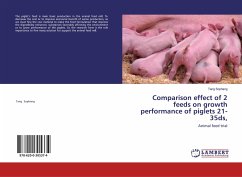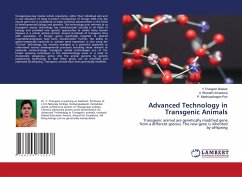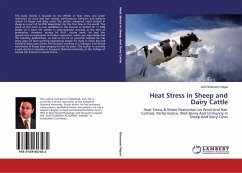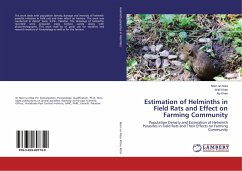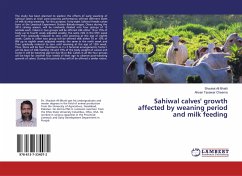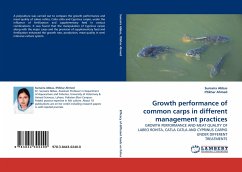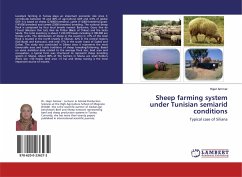
Sheep farming system under Tunisian semiarid conditions
Typical case of Siliana
Versandkostenfrei!
Versandfertig in 6-10 Tagen
17,99 €
inkl. MwSt.

PAYBACK Punkte
9 °P sammeln!
Livestock farming in Tunisia plays an important economic role since it contributes between 35 and 40% of agricultural GDP and 4-5% of global GDP. It is based on sheep (274000 breeders), cattle (112000 breeders) goats (141000 breeders) and camels (2900 breeders) breeding. The national sheep flock is composed by four local breeds named: Barbarine, Queu fine de l'Ouest (Western thin tail), Noir de Thibar (Black of Thibar) and the Sicilo Sarde. The total inventory is about 7.234.070 heads including 4.190.000 are female units. The distribution of sheep in the country is: 41% of the total flock is l...
Livestock farming in Tunisia plays an important economic role since it contributes between 35 and 40% of agricultural GDP and 4-5% of global GDP. It is based on sheep (274000 breeders), cattle (112000 breeders) goats (141000 breeders) and camels (2900 breeders) breeding. The national sheep flock is composed by four local breeds named: Barbarine, Queu fine de l'Ouest (Western thin tail), Noir de Thibar (Black of Thibar) and the Sicilo Sarde. The total inventory is about 7.234.070 heads including 4.190.000 are female units. The distribution of sheep in the country is: 41% of the total flock is located in the north (mainly in Siliana), 42% in the central regions (Sidi Bozid and Kairouan), and only 17% in the south (oasis of Gabes and Gafsa). The study was conducted in Siliana since it represents the most favourable area and holds traditions of sheep breeding/fattening. Based on some statistical data related to the average flock size, land area and occupation, a typical farm was structured to represent sheep breeding system in Siliana. About 80% of the farmers in Siliana are small holders (flock size 50 heads, land area 5 ha) and sheep rearing is the most important source of income.





